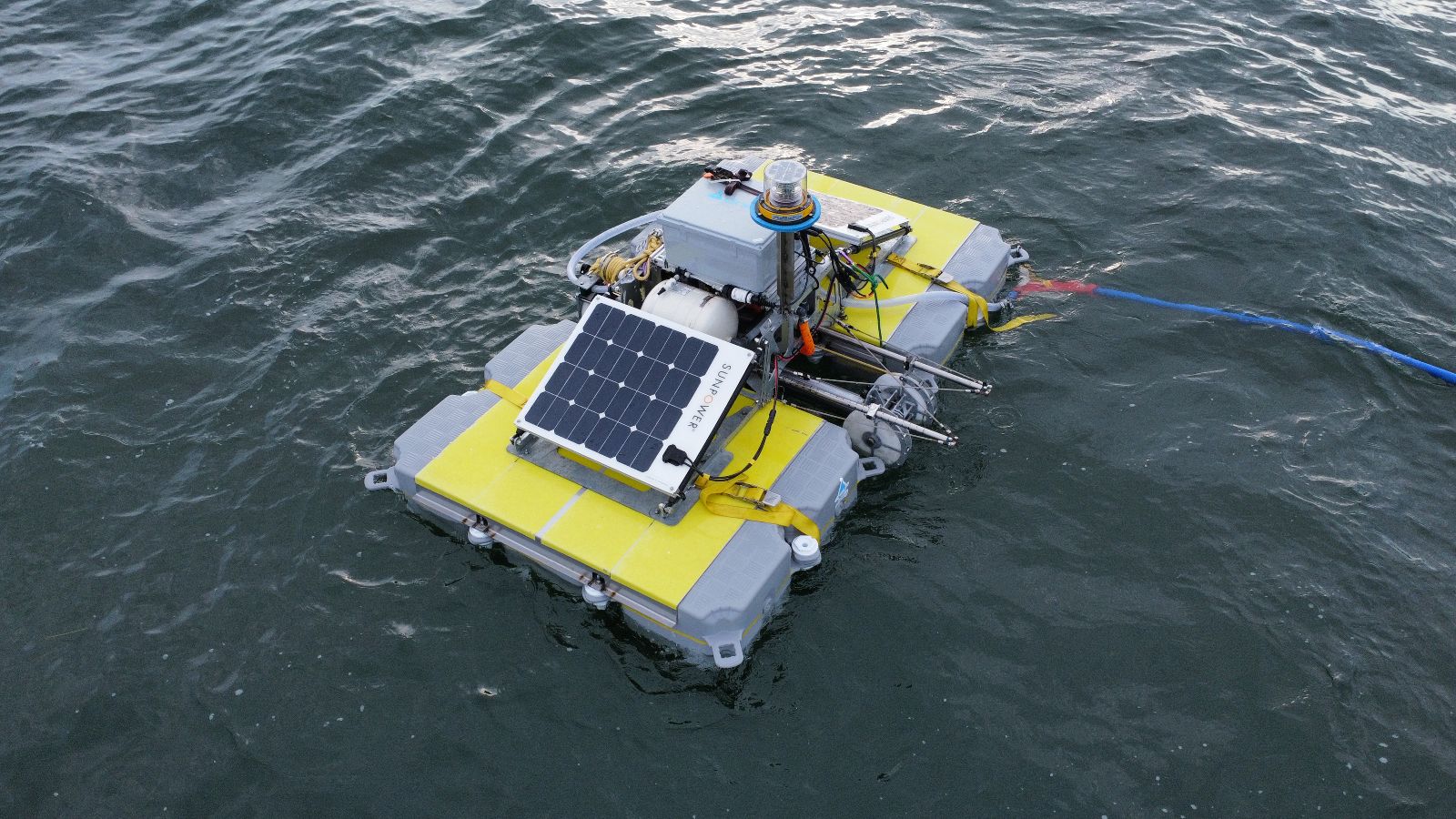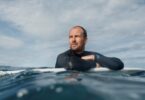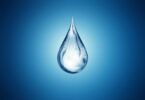While travelling in Corsica 10 years ago, Dragan, founder and CEO of Oneka, wondered: where does the water come from? The timing was perfect as he was about to start his bachelor’s degree project in mechanical engineering. He knew that it was possible to make electricity from waves and fresh water from seawater, but conventional desalination as we do it today is a very expensive and polluting process because of the amount of energy required.
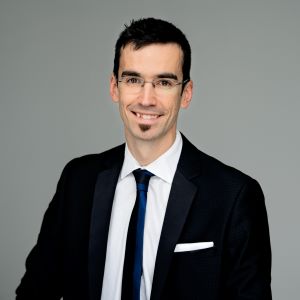
Dragan Tutic, CEO & Founder
This is how Dragan came up with the idea of creating a modular and scalable solution that requires no fossil fuels and only a few components, compared to conventional solutions. After his studies, Dragan travelled the world to meet with those facing water scarcity challenges. These meetings confirmed that there was a tremendous need to use the ocean – an unlimited and easily accessible reservoir of both water and energy – to create sustainable and affordable desalination solutions.
Oneka Technologies is headquartered in Quebec, Canada and they have an office in Nova Scotia, Canada. They also have two operation sites in Florida and Chile and will deploy their first project in California in 2024. Oneka’s target markets are currently California, Chile and the Caribbean.
How Does Oneka’s Wave-Powered Desalination System Work?
Oneka’s wave-powered desalination system eliminates the energy conversion steps usually found in conventional desalination systems. The 100% mechanical technology includes various filtration steps to get clean and drinkable water. Each buoy of the modular system is anchored on the seafloor. To pressurise the seawater, which is necessary in the desalination process, the water is pumped using a hydraulic pump that uses the oscillating motion of the ocean waves as the sole source of energy. As the buoy moves down in the trough, seawater is drawn through a strainer, pre-filters and reverse osmosis membranes before becoming fresh water.
The low-salinity brine is discharged back into the ocean and the freshwater is pumped to the coast (via an underwater pipeline), using the residual energy, into the water distribution network or a storage tank.
Oneka has developed a range of buoys, each capable of producing between 1000 L and 500,000 L of water per day. Their buoys are equipped with sensors to monitor pressure, flow, salinity, and GPS position. A web interface enables access to data in real time.
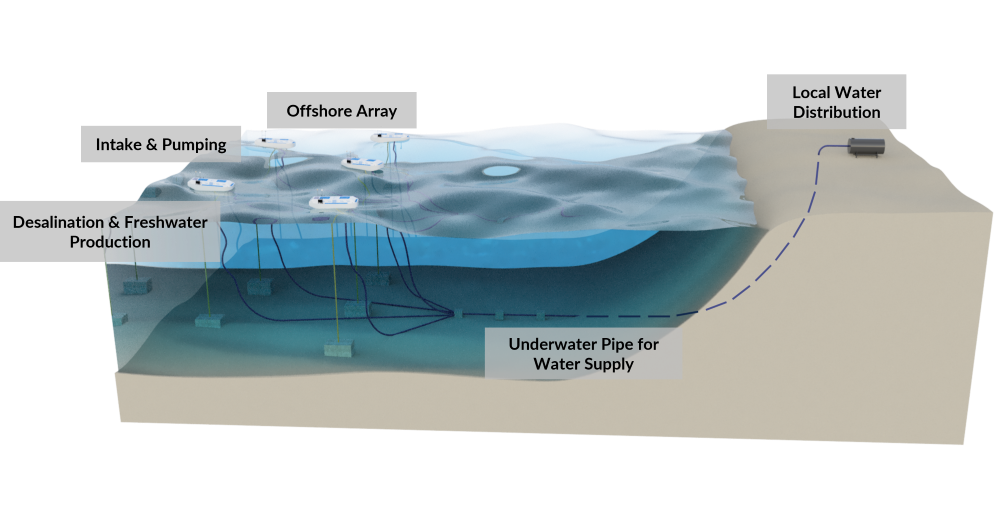
The Icecube-class units represent a tailored solution crafted specifically for emergency relief efforts and forward operations. They have been developed in conjunction with the US Department of Energy during the Waves to Water Prize competition. Each unit can produce up to 1,000 L/day, depending on the wave regime.
These units come complete with a desalination process plant, wave-powered buoy, anchor, water pipeline, reservoir, components, tools and spare parts. When there is no crane available, Oneka can provide a barge for launching in the ocean. It is also possible to ask for a data acquisition system for real-time, remote monitoring of system performance.
In terms of applications, these units are a vital asset in emergency and humanitarian aid scenarios. Whether it’s responding to disaster-stricken regions with compromised water access, addressing chronic water scarcity in underserved communities, or swiftly deploying in the aftermath of natural disasters, these units offer a lifeline. Their adaptability extends to remote or inaccessible regions where larger desalination plants are impractical.
Additionally, by eliminating the reliance on multiple water bottles, they significantly contribute to reducing plastic waste. The Icecube-class units serve as a comprehensive solution, delivering immediate and sustainable access to safe drinking water in the face of adversity.
Why Are Icecube-Class Desalination Buoys Well-Suited for Humanitarian and Disaster Relief?
The Icecube system has been designed for rapid assembly and installation, 8 hours with 6 people and 16 hours with 3 people. The buoy can be deployed using a small boat equipped with a 25-hp motor. Container dimensions can also be adapted to customer specifications to facilitate the delivery of units to the site. Being small units that use 100% wave energy to operate, no external power source is required, eliminating dependence on imported energy. Using this solution requires no single-use packaging, eliminating the need for waste disposal and logistics.
Their simplicity, portability, and efficacy make them an invaluable resource for critical relief efforts and situations where clean water is urgently required.
Icecube-Class Unit Capacity
The system’s water production has a capacity of up to 50,000 L (13k US gal) per day per unit, depending on the wave regime. The system’s modularity and scalability enable adjustments in the number of buoys in the array, ensuring flexibility to meet changing water demands across diverse settings.
This adaptability allows customisation for different community sizes and industrial needs, such as resorts.
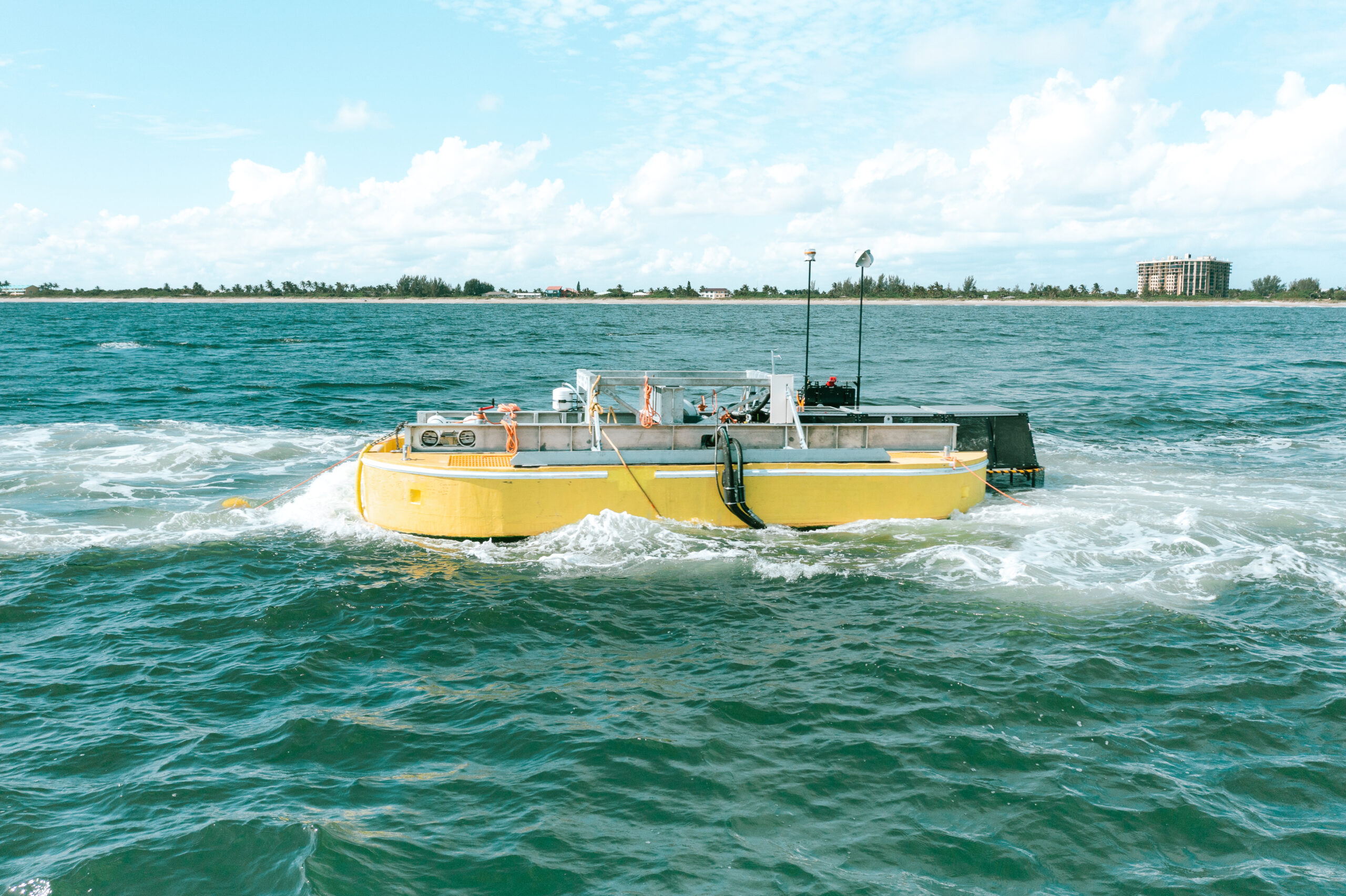
Iceberg class unit
How Does the P-Class Unit Differ from the Iceberg-Class Unit?
The P-class units have a capacity of up to 10,000 L ( US gal) per day per unit. These units are not used for commercial applications, but rather suited for showcasing and piloting purposes. The P-class unit was developed to deploy demo sites and pilot projects to show the performance of the technology in new markets.
Adapting Oneka’s System to Changing Water Needs Without Infrastructure Expansion
Oneka’s system boasts remarkable adaptability, primarily owing to its modular design. This feature enables the system to seamlessly adjust to fluctuating water demands without necessitating the construction of new infrastructures. Here’s how it operates:
The system comprises an array of buoys, and the volume of water produced can be modified by manipulating the number of units within this buoy array. This modular setup allows for scalability by easily adding buoy units as needed. In a client-centric approach, Oneka takes charge of the process required to modify the buoy array. This means that any necessary adjustments or changes are managed entirely by the Oneka team, sparing the client from direct involvement.
By providing this flexibility and managing modifications internally, Oneka empowers clients to scale their water production without the usual complexities involved in constructing new infrastructure or undertaking substantial installations. This approach streamlines the process, enabling a swift and responsive adjustment to evolving water demands.
The Environmental Benefits Of Using Oneka’s Technology
Oneka’s technology offers a multitude of environmental benefits that contribute to a more sustainable approach to water desalination.
Firstly, their system doesn’t emit greenhouse gas (GHG) emissions. For each m3 of water produced daily, they avoid the emission of 1 ton of CO2e per year, compared to conventional desalination solutions. The absence of electricity reliance is a standout feature. By harnessing only wave energy, the system operates with zero electricity, fuel, or solar panels for the desalination process – solar panels are only used to supply the sensors.
Furthermore, Oneka’s design doesn’t require land-based real estate, unlike traditional desalination systems or even solar-powered ones. This approach significantly reduces the need for coastal land acquisition, preserving these ecosystems and curbing deforestation that might occur for land-based solutions. The system simply connects to existing water distribution networks or storage tanks, reducing its physical footprint and safeguarding coastal areas.
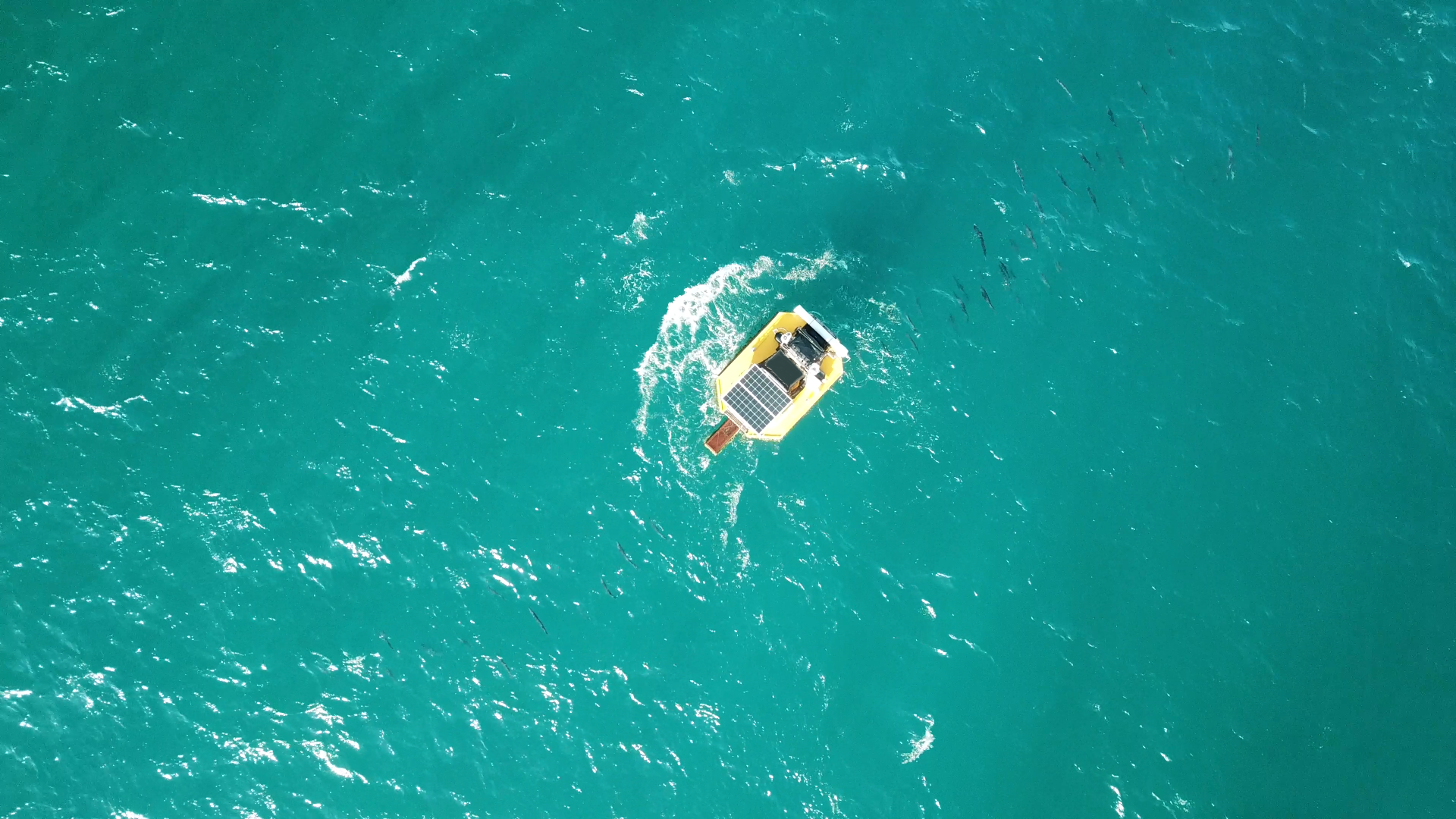
P-Class unit
The eco-friendly handling of brine discharge is another notable aspect. The brine, with a salinity only slightly higher than that of the ocean, is efficiently discharged through individual water intake and outlet points on each buoy. This strategic dispersal over a broad area ensures rapid dilution, minimising any detrimental impact on marine flora and fauna. This eco-friendly approach aligns with sustainable practices, crucial for preserving coastal ecosystems
Lastly, based on observations, the team has noted that the concrete anchor could potentially be used positively for the ocean to promote marine growth, by optimising the design based on the specific needs of the site (diversity of marine life, hard bottom, corals, etc.). The design incorporates several key elements focused on environmental preservation and safeguarding marine life.
At the core of this system are the 60-micron inlet holes strategically positioned to serve as entry points for seawater. This avoids the risk of marine life being inadvertently drawn into the system, minimising potential harm or disruption to the underwater environment.
Moreover, the intake system is equipped with a backwash mechanism. This feature serves multiple purposes. Primarily, it contributes to the reduction of maintenance needs by effectively clearing debris or particles from the intake mesh. The backwash step helps maintain the integrity and functionality of the mesh, ensuring that it remains unobstructed and capable of efficiently filtering seawater.
The synergy between the 60-micron inlet holes and the backwash mechanism not only ensures the protection of marine life but also enhances the overall reliability and durability of the intake system. Oneka has said that further studies will be conducted to confirm the potential positive impact on marine ecosystems.
Affordable and Sustainable Water Access
The cost of energy can represent up to 50% of the cost of water. By utilising the renewable and unlimited energy contained in the ocean waves, Oneka has a great deal of room to grow into the most affordable solution on the market once Oneka scales its systems and begins mass production. Offering water as a service, the cost of water depends on many factors specific to the installation site. Even without a full scale-up, Oneka is already able to provide competitively-priced water in many parts of the world.

Camille St-Pierre
Conclusion
With their desalination units, Oneka Technologies provides a solution for clients who are looking to obtain a water supply solution with minimal financial risks. Unlike a traditional equipment purchase where the client has to take on all the risks of finance, permitting and compliance, insurance, procurement, construction, operation and maintenance, Oneka Technologies finances, designs, installs, maintains and operates their systems at its own cost.
The Oneka team also monitors the system performance and the water quality according to the local standards. Under this business model known as “Build-Own-Operate” (BOO), the client simply pays for the water on a volumetric (per cubic meters, gallons) basis.
This model transforms the typical vendor-customer relationship into a partnering relationship where the interests of both the client and Oneka are aligned. As opposed to equipment manufacturers who must make their money upfront, Oneka must design solutions that perform over the life of the contract. Since Oneka’s capital is at risk and is paid only when they deliver water, their plants are designed with durability, reliability and energy efficiency in mind. That means their client can focus on their core business while having the ‘peace of mind’ of Oneka’s professional services & devoted team.

Marie-Cecile-Cleroux
Want to learn more?
Exploring the company website or following Oneka on LinkedIn are excellent ways to delve deeper into this new innovative technology. Whether you’re seeking more detailed information, or looking for updates on the latest projects and developments, these platforms are great resources to gain a deeper understanding of Oneka’s floating desalination solutions.



